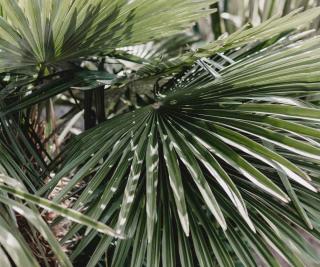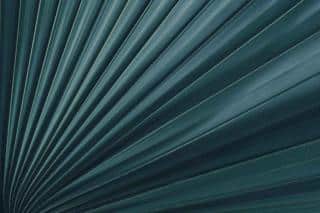

The latania is one of the most beautiful ornamental palm trees. Its blueish foliage and leaf crown are remarkable.
Key Latania points and facts
Name – Latania loddigesii
Family – Arecaceae
Type – indoor plant
Exposure – very well-lit, even full sun
Soil – soil mix
Foliage – evergreen
How should one take care of a latania, especially indoors, how and when should it be repotted, watered and what diseases infect it?
The latania tree requires good soil mix that can be amended with ⅓ compost, if you’ve got any.
In order to enhance drainage, pour clay pebbles or small stones into the pot to form a layer at the bottom.
This will help ensure that its roots won’t wallow in water, which could be fatal.
Just as might be done in pots, feel free to place a bed of gravel, small stones or clay pebbles to ensure proper drainage.
Generally speaking, most latania palm trees don’t tolerate the cold or temperatures close to or just below freezing.
Under temperate climates, a latania adapts well to living indoors in homes and apartments.
Choose for it a place near a window facing to the South or West so that it would bathe in a good deal of both indirect light and sunlight.
If you live in a house that is quite dark, avoid purchasing latania because it won’t cope well with the lack of luminosity.
The watering of your latania is important because it should neither be too much nor too little. Finding the right balance is the key…
 This is usually the time of the year when the latania palm grows most.
This is usually the time of the year when the latania palm grows most.
Water regularly while letting the soil mix dry in the surface before watering again.
Watering must be regular but limited, in order to not suffocate the plant’s roots.
You might say that watering every 2 or 3 days is often needed.
What is most important is to spray mist on the leaves every day to recreate the moisture from its natural habitat.
Start reducing the watering because the plant’s water needs begin to decrease.
Only when the soil is dry down to the first inch or so (a couple centimeters), water to moisten the entire soil mix clump again.
One could say that watering once every 15 days should be enough.
But this also depends on where your latania is placed: if it is in full sun, its needs will surely be higher.
 This is undoubtedly due to lack of light or excess water.
This is undoubtedly due to lack of light or excess water.
If the plant continues to produce new leaves, this is part of your latania’s natural cycle. Trees, even evergreen trees, lose their leaves to renew them.
All in one aesthetic, resilient and very easy to grow, this palm tree native to Mauritius is one of the most appreciated and often-purchased indoor plants.
Its foliage is particularly elegant and unique, and its thick trunk brings a touch of exotic life to a living room, dining area, or any other room of the house that is well-lit.
Relative air moisture of 60% is needed for this palm tree. Indoors, you’ll have to mist the leaves almost daily with soft, non-hard water.